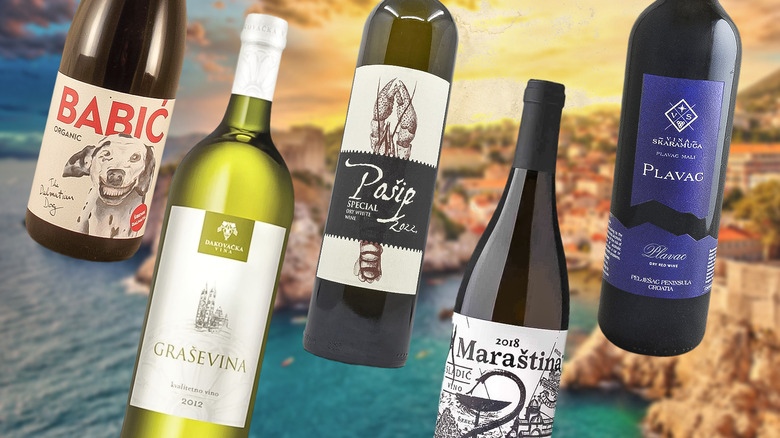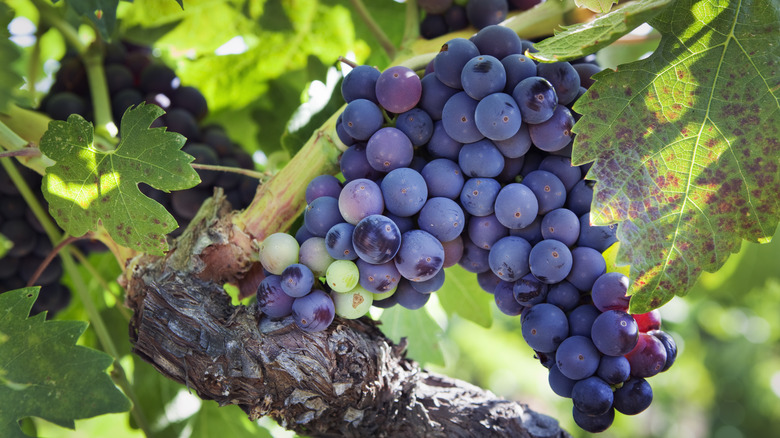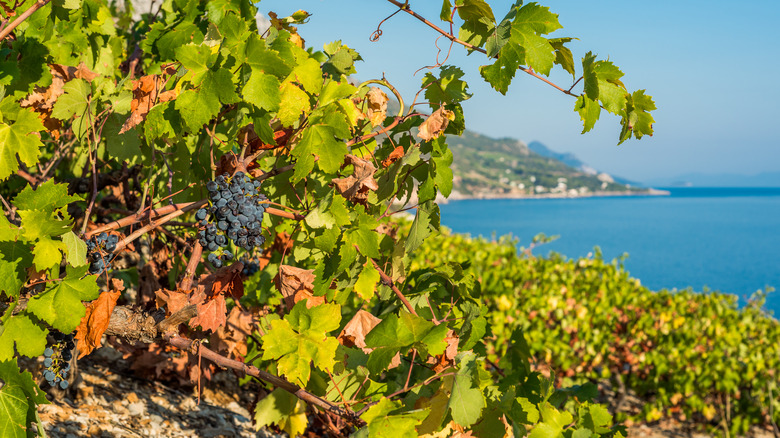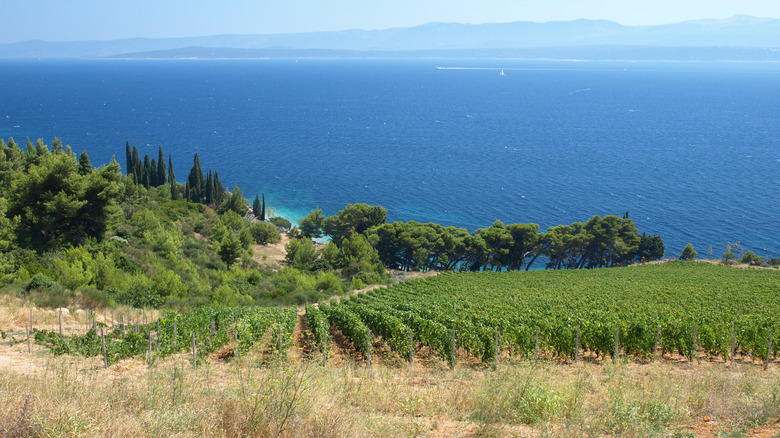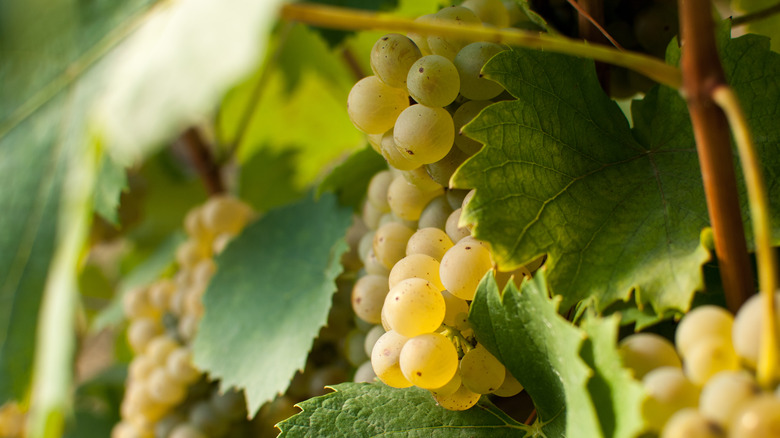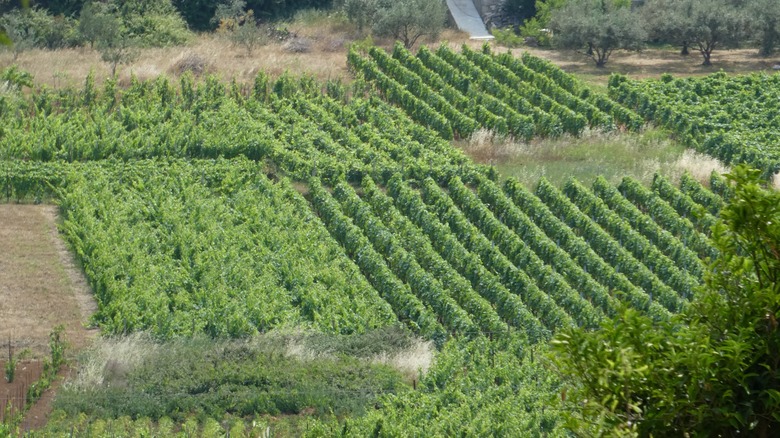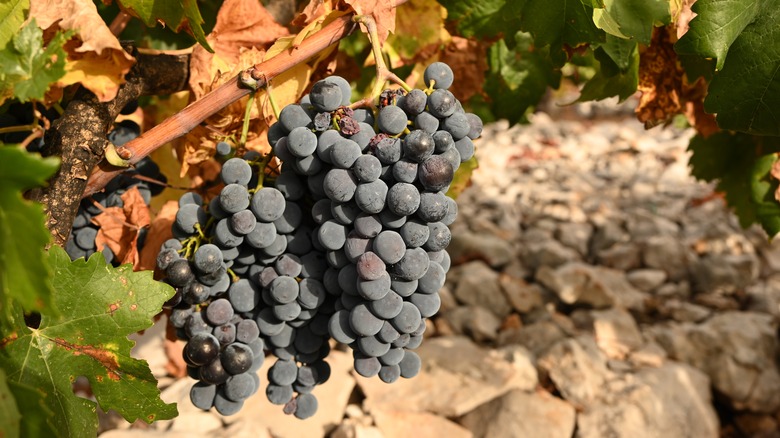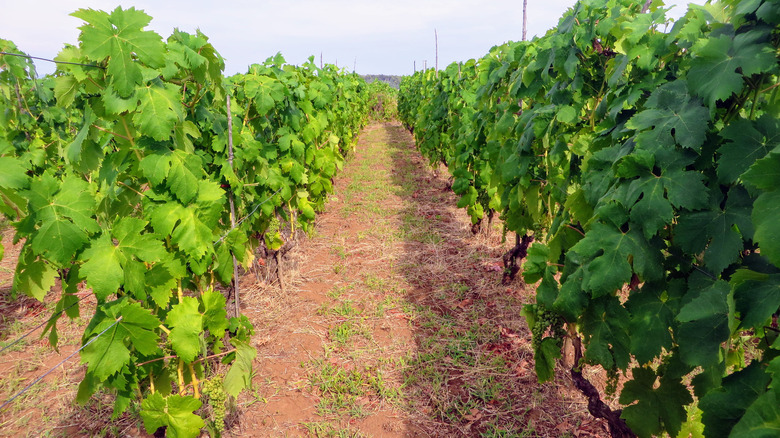Explore Croatia With These 7 Wines
Some of the world's most famous vineyards span from Spain to France to Germany to Italy, commanding international attention on the world wine stage — but many of the continent's most interesting wines are coming from outside these ultra-well-known regions, tucked amid valleys and peninsulas beyond the Loire and the Mosel. If you want to explore Europe's wine scene beyond French Bordeaux and Italian Barolo, one of your very first stops should be Croatia.
Croatia boasts several different wine regions, ranging from islands and coastal areas to inland pockets of vineyards. While you can find plenty of international grapes here, there are several native grapes that are used to make wines you won't be able to find elsewhere.
We've visited Croatia to taste some of its wines, and had the chance to try a variety of Croatian wines available on the American market. We also spoke to Boston-based sommelier Nick Angel, who has organized tastings of Croatian wine in his city, to learn more about this European country's wines. Let's take a closer look at some of the most celebrated wines that come from Croatia. Whether you have plans to visit the country and are interested in learning more about the types of wines to try when you're there, or you just want some advice to maximize your next wine shop visit and perhaps grab a bottle of Croatian wine, this guide can point you in the right direction.
Zinfandel
The United States may be the country most celebrated for wines made from the zinfandel grape, but you may be surprised to learn that zinfandel wine didn't originate in the U.S. at all. In fact, zinfandel, which is called primitivo in Italy, is actually native to Croatia. There the grape is referred to as crljenak kaštelanski, which is just one of several names that this grape has collected while bouncing from country to country. Not only is zinfandel important in Croatia in its own right, but it's also related to another well-known Croatian grape, plavac mali.
You may have an idea of what to expect with Croatian zinfandel if you've gotten the chance to try the grape in the United States or in Italy, but this variety takes on a different character when it's grown and vinified in Croatia. Crljenak kaštelanski wines are often fruitier than American zinfandel counterparts, and tend to have more tannins. Like many other Croatian grape varieties, this wine is largely produced in Dalmatia, among other regions. The Bedalov winery makes excellent zinfandel, as does Benmosché Family Wine.
Plavac mali
If you like full-bodied red wines, you have to give plavac mali a try. This bold red wine is one of Croatia's most well-known native grapes, and its most popular red variety. According to Nick Angel, "Plavac mali is known for being big and bold, with naturally high alcohol and tannins. Some of its robust nature can be attributed to descending from the zinfandel grape." Take a sip of wine made from plavac mali, and you may notice aromas of blackberry, dark cherry, and plum, along with spicy, smoky, and chocolatey notes.
Looking for a particularly delicious plavac mali? You may want to seek out Dingač, a type of wine made with plavac mali grapes that comes from the peninsula of Pelješac. "The Pelješac Peninsula off the coast of mainland Dalmatia is home to Croatia's finest plavac mali," says Angel, adding that beyond those black fruit notes, you may also pick up on "Mediterranean notes of spice and olive, and perfumed aromatics." Try plavac mali from producers like Matuško and Kiridžija.
Maraština
Located along Croatia's southernmost stretch of Adriatic Sea coast, the Dalmatia region is home to many of Croatia's best wines and vineyards, and here maraština thrives. Maraština is a white grape that can grow all along the country's coast, and is also sometimes produced in nearby countries like Italy and Greece. It was discovered that maraština is actually the same grape variety as malvasia, and is likely not native to Croatia, although it has become an important staple in the country's wine scene. While maraština is not the most common white wine grape variety in this region, it still provides the base for one of Croatia's most delicious white wines.
Maraština is often refreshing with a distinct mineral quality to it that reflects the coastal environment in which it's produced. The grape itself can be quite acidic, and it can make wines that range from fresh and elegant to ripe and more full-bodied, with hints of pear along with a creamy texture. Some of these wines age well, and Maraština grapes can also be used to make sweet dessert wines. Try a maraština from the producer Baraka.
Graševina
Another white grape to be on the lookout for when tasting Croatian wine is graševina, which Nick Angel describes as a "workhorse" variety. "Graševina dominates the flat, inland regions of Slavonia and Croatian Danube, accounting for nearly 25% of total plantings nationwide. The majority of the fruit is used to make table wine for domestic consumption." These wines are light and refreshing but tend not to be too complex, according to Angel. If you've ever had the chance to taste welschriesling — a popular variety of Austrian wines — then you know what graševina tastes like as well; they're actually the same grape.
Although graševina has had a reputation for providing average-quality wines, Angel says that trend may be starting to turn. "Some producers are striving to create graševina that is more complex and balanced," explains Angel. "They can be made in a variety of styles, but the best expressions have a natural acidity that adds structure, with notes of fresh, just-ripe citrus fruit and refreshing minerality." Try graševina from Antunović winery.
Pošip
Perhaps the most notable white wine from Croatia is pošip, which Nick Angel says is cultivated in different ways across the country. "Despite its adaptability, pošip is known for drastic variety from site to site, showcasing the unique terroir of the selected vineyard area," Angel explains.
Many of the best wines produced from the pošip grape come from Korčula, an island located along Croatia's Adriatic coastline between the cities of Split and Dubrovnik. In these wines, you may notice notes of refreshing green apple, but they can also be more complex, expressing almond and vanilla characteristics.
"Pošip can be fresh, neutral and young, or oaked and aged, due to its natural acidity," says Angel, adding that pošip wines "are generally medium- to full-body, with high alcohol. My favorite pošips have fresh, searing acidity with a backbone of layered stone and citrus fruit." Try this variety from Pošip Čara — an agricultural cooperative that's been specializing in producing this grape since 1984 — or Blato 1902.
Babić
A red grape native to the Dalmatian coast, babić shares many characteristics with plavac mali, says Nick Angel. "What distinguishes babić is an extra touch of natural acidity," he says. For a long time, babić was mostly harvested as a blending grape for table wine, but according to Angel, these days more and more winemakers are trying to experiment with babić by investing time and money to make it into more of a premium product. "Babić has experienced a surge in plantings as winemakers discover its merit," Angel explains.
In the glass, babić wines appear dark, and they feature a bold taste from its tannins, which are what make your mouth feel dry when you drink red wine. On the palate, you might notice notes of dark berries, figs, and spice. These wines are often aged in oak to help temper the strong tannins and acidity. "Ripe red fruit flavors of juicy raspberry and cherry work alongside the high alcohol and acidity to provide balance in the best versions," Angel says. Try a babić from Delusional Wine.
Grk
It's always exciting to explore a country's native wine grapes, which is one of the reasons we love grk so much. It's traditionally been grown on a small scale, so unlike many of its Croatian cousins, grk wines can be difficult to find — but this rarity makes the variety all the more worth seeking out.
Grk is mostly grown on the island of Korčula, and according to locals, the grapevines flourish in rocky terrain by the sea coast, giving wines made from this grape a subtle salinity and mineral-forward flavor. Grk wines tend to be bright and crisp, making them a specialty that can be considered among the best wines to pair with lobster and other seafood.
If you see "grk" on a label, there's a good chance you're going to be getting a dry wine. However, not all grk is made the same way. Some grk is aged on the lees to enhance its development, while it's also possible to make grk into sparkling wine. In some cases, grk can even be used to make prošek, Dalmatia's famous dessert wine. Check out grk from the Cebalo winery.
